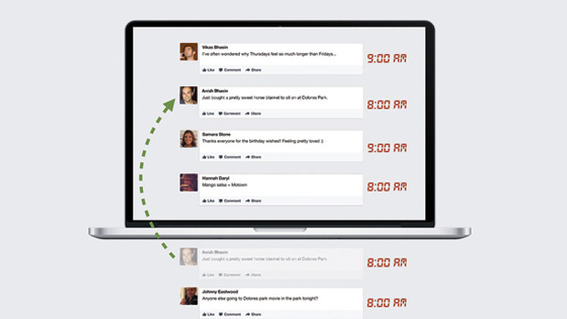In a press event on August 6, Facebook revealed how it determines which content gets displayed in users’ News Feeds and announced changes to its algorithm.
The event was held in response to criticism from both the media and Facebook users about the lack of visibility surrounding how the network ranks News Feed content. It promised to make information about future changes more transparent and started a blog series — News Feed FYI — to use as the distribution channel for such information.
News Feed Changes
Two primary changes to the News Feed were announced at the event.
-
Story Bumping. The first change, called “Story Bumping,” came as a result of data that showed people read 57 percent of the stories in their News Feed, but do not scroll far enough to see the other 43 percent. With this update, organic stories that people did not scroll down far enough to see can reappear near the top of News Feed if they are still getting lots of likes and comments.
Facebook said that tests showed the number of stories read increased to 70 percent based on this change.
Story bumping moves older posts near the top of the News Feed. Enlarge This Image
Enlarge This Image
- Last Actor. The next change, which Facebook referred to as “Last Actor,” keeps track of the most recent interactions a user has. For example, by liking a post in the News Feed, the algorithm will track the last 50 interactions — likes, comments, and shares — and use that information to rank posts so that more appear from that person or Page.
What This Means for Merchants
These updates can have a positive effect on the way users interact with merchants’ Page posts.
Thanks to “story bumping,” posts that users might have otherwise ignored could get moved to the top of the News Feed and increase the chance they will get read. This could also mean that the shelf life of a Facebook post gets prolonged beyond what could be as short as two hours.
Only stories that receive an adequate number of likes, comments, and shares reappear at the top, however. This demands that merchants publish the most relevant and engaging content possible.
Here are some suggestions for improving the quality of your content.
-
Post multiple times per day. A blog post from social commerce company Badgy said that since new stories are more likely to show up, once someone sees your post the chances of it appearing again greatly diminish. This means more content should be scheduled for posting throughout the day.
-
Check Insights to determine optimal posting times. Facebook just launched a new version of Insights that enables merchants to compare reach and engagement around posts with the time of day they were published. This can provide the intelligence needed to optimize posting activity when it will receive the greatest amount of activity.
-
Utilize rich media. Facebook made an update to its algorithm last March that was designed to emphasize its visual appeal. According to HubSpot, photos generate 53 percent more likes than the average post, so it makes sense to use rich media like photos and videos.
-
Purchase Facebook ads. Use Facebook advertising in the form of Promoted Posts and Sponsored Stories to gain more exposure for your content and increase the number of likes, comments and shares.
-
Run contests and special offers. Incentivize engagement through the use of contests, promotions, and special offers. Third-party providers like North Social and Offerpop make this easy to do. Facebook also has its own program called Offers, which can be launched directly from the Timeline.
Conclusion
Facebook’s goal with the News Feed is to deliver the most relevant stories that its users want to see from Pages, friends, and people they follow. The recently announced update is a step in the right direction, but one that demands merchants produce relevant content on a timely basis.



